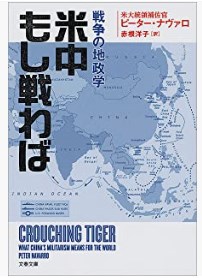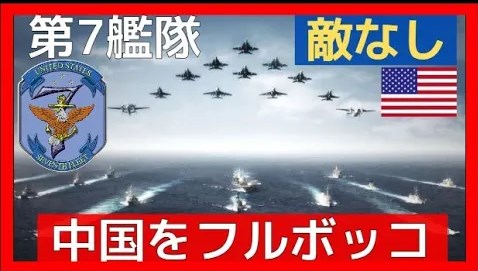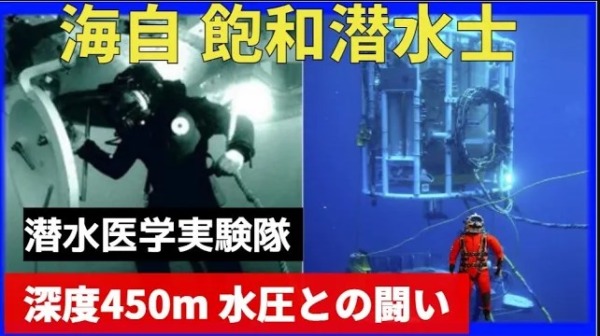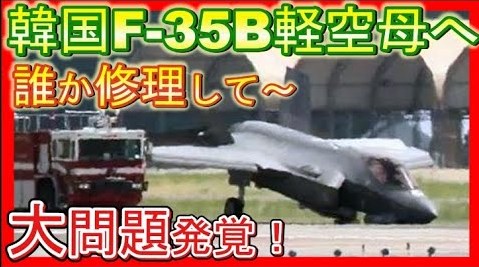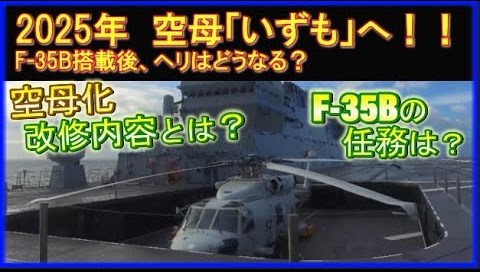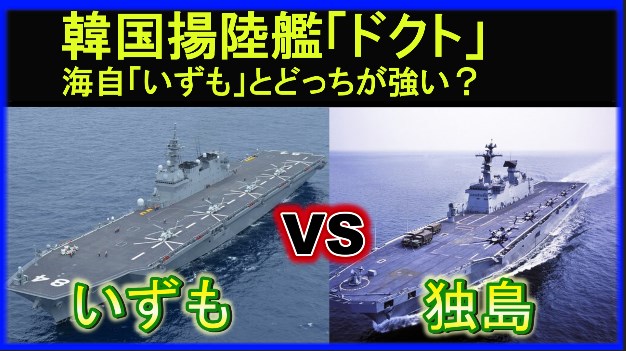
Amazonのオーディオブック12万タイトルの本を好きなだけお楽しみいただけます。・本の1冊分の月額で聴き放題
・料金をメリットが上回る
・いつでも読書できる
・読書量が格段に増え、積読が解消される
・長時間の読書も目が疲れない
・聴くたびに学びを感じる

This article is available in English.
Please scroll below the Japanese article to see the English version.
韓国の強襲揚陸艦「独島」(どくと)
アジア最大の軽空母級輸送艦と自負する韓国であるが、この揚陸艦が設計ミスにより、ポンコツであると報じられている。
そのため、軍事用としてではなく、イベントやパレード用の艦艇やマッコリを飲みながら設計したなどと揶揄され、就役から7年が経過しても戦力となっていない。
韓国は就役当初は、揚陸艦として作られてはいるものの、改修すれば軽空母としても運用できると景気のいいことを報道していたが、次々と欠陥や設計ミスが発覚した。
今回は、韓国が誇る強襲揚陸艦「独島」のスペックと海上自衛隊の「いずも」との比較、設計ミスによる欠陥について解説していこう。

独島といずもの比較を動画も解説してるよ!最後まで楽しんでね!
この記事に書かれている内容は
独島(どくと)級揚陸艦のスペック

韓国海軍の独島型強襲揚陸艦は、日本の固有の領土である竹島の韓国名、独島、ドクトが由来している。
就役は2007年で、独島のスペックはこのようになっている。
・サイズ:全長199m 全幅32 m
・満載排水量:18,800トン(2番艦は500トン増)
・機関:ディーゼルエンジン×4基
・出力:17200馬力
・最大速力:22ノット(時速約40㎞)
・航続距離:10,000マイル
・乗員:個艦要員448名+上陸部隊720名
全長199メートル、満載排水量は18800トン、機関はディーゼルエンジン機関を4機搭載しており最大速力は22ノット、乗員は448名に武装した隊員を720名収容可能。
レーダーはイスラエル製を採用しており、武装はオランダ製の30ミリ機関砲ゴールキーパーを2基装備し、アメリカ製の近接防御用ミサイルであるSea RAM(シーラム)を1基を装備している。

搭載するヘリコプターはUH-60P、韓国製ヘリコプターKUH-1 スリオンの海兵隊向け派生型であるマリンオンを搭載できる。
199メートルの甲板は全通式を採用し、最大5機のヘリコプターの発着艦が可能なっている。
また甲板の前後に2基のエレベーターを装備している。
韓国軍もF-35B戦闘機の採用を考えており、この独島型強襲揚陸艦に搭載するのではと言われており、その場合は、海自の「いずも」と同じく改修する必要がある。
また艦の後部がハッチ方式になっていてウェルドック内に海上自衛隊も採用しているエアクッション艇通称LCAC(エルキャック)を2隻収容して戦車や装甲車両を輸送できる能力を持っている 。

水陸両用作戦時においては作戦の指揮をとる旗艦の役目を担い、上陸作戦の中核となる艦が韓国海軍強襲揚陸艦、独島の任務でもある。
では、サイズや形が似ている海上自衛隊の「いずも」と比較すると、どっちが優れているのか比較してみよう。
独島級揚陸艦と海上自衛隊の「いずも」との比較
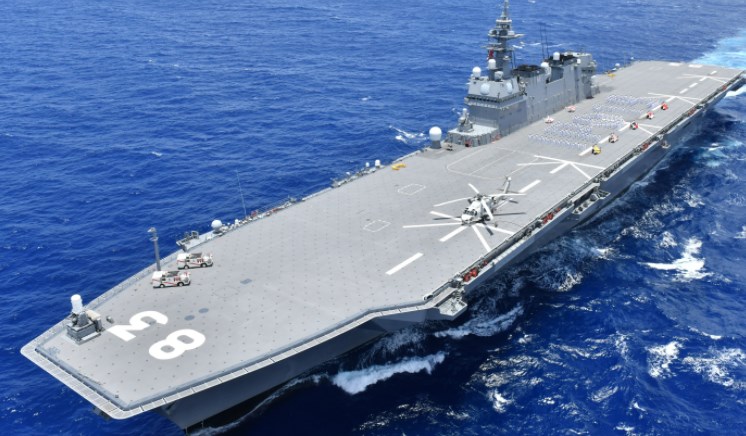
我が国の海上自衛隊のDDHヘリコプター護衛艦いずもと独島を比べてみる。
いずもは旧国名「出雲」が由来で、全長は248メートル、満載排水量は26000トン、最大速力は30ノット(時速約55キロ)、エンジンはガスタービンエンジンを4基使用している。

建造費用は1200億円、大東亜戦争中の空母蒼龍よりも巨大で名実ともに海上自衛隊最大の艦艇である。
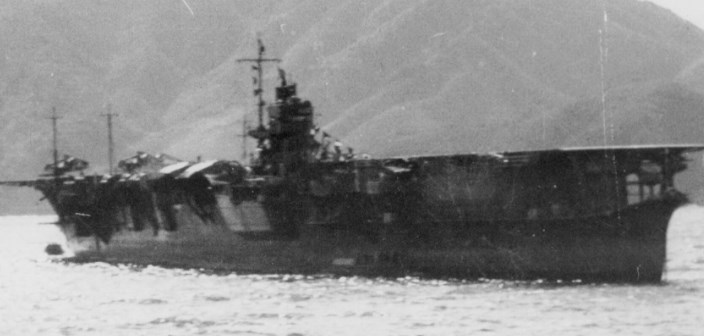
乗員は470名、レーダーも国産を使用しており、SH60Kヘリコプターを最大5機同時に離発着艦可能な広大な全通式甲板をもち、艦橋を右側によせ甲板の前部にエレベーターを1基、甲板後部右側にエレベーターを1基装備している。
格納庫は航空機の搭載に使用できるスペースが長さ125m、幅21mで、SH-60Kの最大格納数は第1格納庫に6機、第2格納庫に6機、整備格納庫に2機の計14機を格納できる。
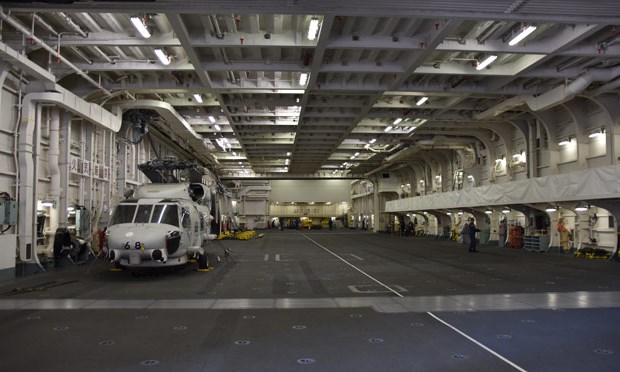
陸上自衛隊の73式トラックなら50台は積載可能である。
また、補給艦のように、他の艦船への燃料を補給する洋上補給機能も有している。
さらに手術室や病室を完備し病院船としての機能も持ち合わせており災害派遣で活躍した実績もある。
いずもはオスプレイを着艦させたこともあり、今後は F-35Bを運用するために、現在改修中である。
武装は20ミリ機関砲CIWS(シウス)2基と近接防御ミサイル、Sea RAMを2基装備している。
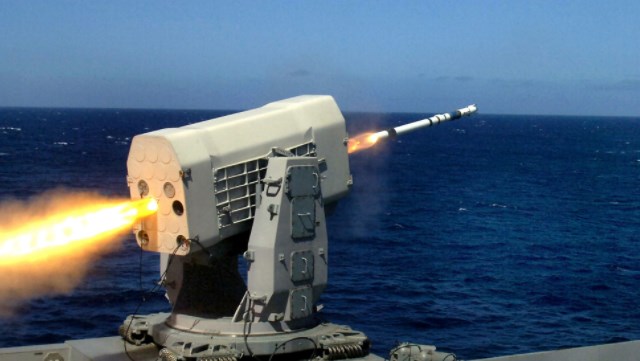
独島は、いずもより小型にもかかわらず、最大速力は「いずも」よりも劣っている。
ただ、独島はLCACを2機搭載しているため、揚陸部隊を送る機能は優れている。
強襲揚陸艦とヘリコプター護衛艦と任務の特性は違うが、圧倒的にいずもの方がスペックは上であろう。
また外洋での長期航海の実績がない独島は外洋での運用に耐える事ができるかは不明である。
長期航海の実績のあるいずもがここでも優位性があると思われる。
[itemlink post_id=”1093″]独島級揚陸艦が使えない理由

独島型強襲揚陸艦がポンコツと言われる由縁はその装備である。
レーダーはイスラエル製、近接防御用の30ミリ機関砲はオランダ製、また対空防御用ミサイルはアメリカ製と様々な国の装備品を使用しているため、火器管制システムが複雑な事やメンテナンスが難しい事があげられる。
レーダーは独島の設計の時点で搭載する位置に不具合があり、シークラッターと呼ばれる海面のうねりをレーダーが拾い、レーダーとしての機能を果たさなかった。
また防御用の「ゴールキーパー」と呼ばれる30ミリ機関砲にも配置ミスがあり、後部甲板の4機のヘリコプターが射撃範囲にはいるという致命的なミスが発生し、メディアに取り上げられた事は有名な話である。
引き金を引けば、搭載中のヘリコプターを射撃する恐れがあり、「ゴールキーパー」だけに、まさに「オウンゴール」になってしまう。
一方、いずもは26000トンで全長は248メートルもあるのに関わらず最大速力を30ノット時速55キロ以上を出せるのに対し、独島は22ノット時速約40キロが最大速力である。

エンジン機関の開発面でも日本には遠くおよばず、また戦闘時におけるダメージコントロール、エンジンの配置が独島はずさんで、一つのエンジンが故障すると航行に支障をきたす事が判明している。
艦船にとって被害を受けた時のダメージコントロールは必須だ。
その設計思想が独島には抜けているのだ。
以前、独島は艦内で発電機火災を起こし、一時的に航行不能になり漂泊状態になったことがある。
[itemlink post_id=”1094″]これはダメージコントロールの設計がなかったからに他ならない。
また搭載するヘリコプターも防錆(ぼうせい)処理技術がなく、実際に運用できるヘリコプターはないとまで言われている。
現にヘリコプターを運用する独島の姿を撮影した写真は少なく、すべての理由も併せて独島はポンコツ艦船と言われている。
韓国揚陸艦「独島」まとめ
韓国海軍の強襲揚陸艦「独島」は本当に韓国に必要な艦艇なのか疑問である。
韓国は北朝鮮と国境を接していているので陸軍力で充分で、海の防衛は中国と北朝鮮のみなので、ミサイルフリーゲート艦程度が国力とミリタリーバランスに見あった配備ではないだろうか。
日本に対抗心を燃やす韓国は日本がイージス艦を保有した時に、韓国も自称イージス艦を配備した。
またF-35B戦闘機も日本が配備を計画すると韓国もすぐさま配備計画を打ち出した。
また最近では海上自衛隊のいずもに対抗しようと大型艦を建造しようとしているが、日本の様に全周が海に囲まれた海洋国家ではない韓国には不必要な装備ではないだろうか。
強襲揚陸艦独島も日本への対抗意識での装備としか思えない。

また独島とは韓国語で、日本固有の領土である「竹島」のことである。
その名前を揚陸艦につける時点で韓国は日本の友軍なのか疑問を感じる。
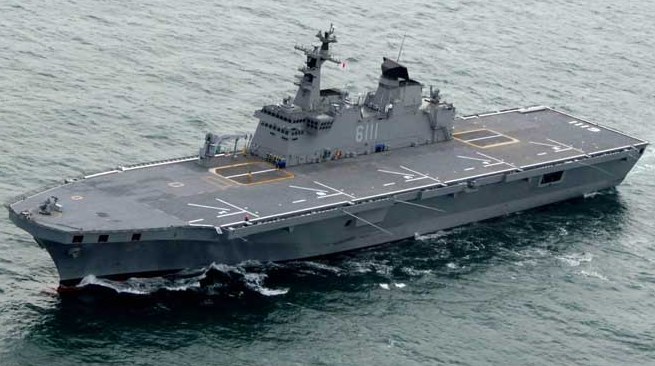
South Korea’s assault landing ship Dokdo
South Korea prides itself on owning the largest light carrier class transport ship in Asia, but this landing ship is reported to be defective due to a design error.
As a result, it has been ridiculed as an event and parade ship or designed while drinking makgeolli, rather than for military use, and has not become a force to be reckoned with even seven years after its commissioning.
When it was first commissioned, South Korea reported that although it was built as a landing ship, it could be operated as a light aircraft carrier if it was upgraded, but defects and design errors were discovered one after another.
In this article, I will explain the specifications of the “Dokdo”, South Korea’s pride and joy, and compare it with the Maritime Self-Defense Force’s “Izumo”, as well as the defects caused by design errors.
Specifications of the Dokdo class landing ship
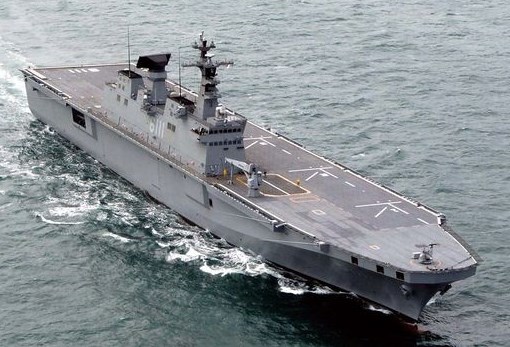
The South Korean Navy’s Dokdo-type assault ship is named after Dokdo, the Korean name for Takeshima, Japan’s indigenous territory.
Commissioned in 2007, the Dokdo’s specifications are as follows.
It has a length of 199 meters, a full load displacement of 18,800 tons, four diesel engine engines, a maximum speed of 22 knots, and a crew of 448 with a capacity of 720 armed personnel.
The ship is armed with an Israeli-made radar, two Dutch-made 30mm machine guns (Goalkeeper), and one American-made Sea RAM missile for close air defense.
It can carry the UH-60P helicopter and the Marineon, a Marine Corps variant of the Korean-made KUH-1 Surion helicopter.
The 199-meter deck is fully passable and can accommodate up to five helicopters.
It is also equipped with two elevators at the front and rear of the deck.
The South Korean military is also considering the use of F-35B fighter jets, and it is said that they may be installed on this Dokdo-type assault ship, in which case it will have to be modified like the Maritime Self-Defense Force’s Izumo.
Also, the rear of the ship has a hatch system, and two air cushion boats, commonly known as LCACs, which are also used by the Maritime Self-Defense Force, can be accommodated in the well dock, and have the capability to transport tanks and armored vehicles.
During amphibious operations, it plays the role of a flagship that takes command of the operation, and the core ship of the landing operation is the ROK Navy assault landing ship, which is also the mission of Dokdo.
Now, let’s compare the Izumo of the Maritime Self-Defense Force, which is similar in size and shape, and see which one is superior.
Let’s compare Japan’s Maritime Self-Defense Force’s DDH helicopter destroyer Izumo to Dokdo.
Amphibious assault landing ship “Dokdo
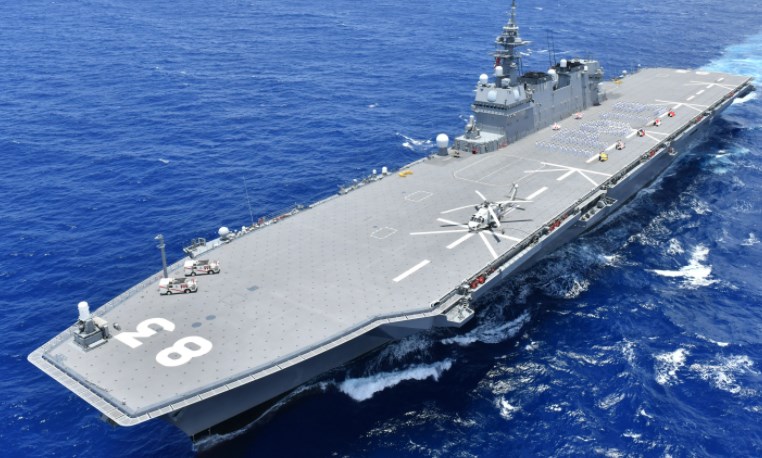
The Izumo derives its name from the former name of the country, Izumo. It is 248 meters long, has a fully loaded drainage capacity of 26,000 tons, a maximum speed of 30 knots (about 55 km/h), and uses four gas turbine engines.
It was built at a cost of 120 billion yen, making it the largest naval vessel in the Maritime Self-Defense Force, both in the name and the fact that it is bigger than the aircraft carrier Souryu during the Greater East Asia War.
With a capacity of 470 crew, it has a vast all-through deck that can take off and land up to five SH60K helicopters at the same time and is equipped with a bridge on the right side, one elevator at the front of the deck, and one elevator at the rear of the deck on the right side.
The hangar is 125 meters long and 21 meters wide and can hold a maximum of 14 SH-60K aircraft: six in the first hangar, six in the second hangar, and two in the maintenance hangar.
It can carry 50 Type 73 trucks of the Ground Self-Defense Force.
Like a supply ship, it also has the capability to supply fuel to other ships at sea.
In addition, it has a function as a hospital ship, complete with operating rooms and hospital wards, and has been active in disaster relief.
The Izumo has also landed an Osprey and is currently undergoing modifications to operate the F-35B.
It is armed with two 20mm CIWS (Cius) machine guns and two Sea RAMs, close-range defense missiles.
Despite being smaller than the Izumo, the Dokdo’s maximum speed is inferior to that of the Izumo.
However, Dokdo is equipped with two LCACs, so its ability to send landing forces is superior.
Although the characteristics of the missions are different between an assault ship and a helicopter destroyer, the specifications of the Izumo are probably better by far.
It is also unclear whether Dokdo can withstand oceanic operations as it has no experience of long voyages in the open sea.
The Izumo, which has a proven track record of long voyages, is likely to have an advantage here as well.
Comparison between Dokdo class landing ship and Maritime Self-Defense Force’s “Izumo
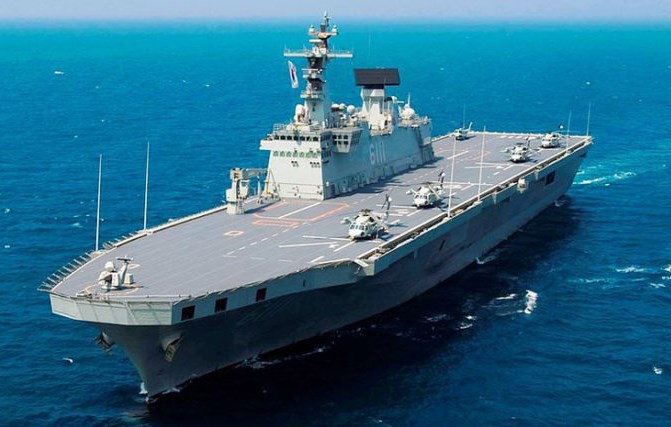
The reason why the Dokdo is said to be defective is because of its equipment.
The radar was made in Israel, the 30mm machine gun for close-in defense was made in the Netherlands, and the missiles for anti-aircraft defense were made in the U.S. The use of equipment from various countries makes the fire control system complex and difficult to maintain.
The location of the radar was faulty at the time of Dokdo’s design, and the radar did not function as a radar because it picked up sea swells, called sea clutter.
The 30mm machine gun, called the “goalkeeper” for defense, was also misplaced, causing four helicopters on the aft deck to be in firing range, a fatal error that was famously covered by the media.
If you pull the trigger, you could shoot the helicopters on board, which would be an “own goal” for the “goalkeeper.
On the other hand, the Izumo is a 26,000-ton, 248-meter-long ship that can reach a maximum speed of 30 knots and over 55 kilometers per hour, while Dokdo’s maximum speed is 22 knots and about 40 kilometers per hour.
In terms of engine development, Dokdo was far behind Japan, and in terms of damage control and engine layout during battle, Dokdo was so sloppy that if one engine broke down, it would interfere with navigation.
Damage control is essential for any ship.
This design concept is missing from Dokdo.
In the past, Dokdo had a generator fire inside the ship, which temporarily disabled her navigation and left her adrift.
This was only because the ship was not designed for damage control.
The helicopters on board also lacked anti-corrosion technology, and it is even said that no helicopter can actually operate.
In fact, there are few photos of Dokdo operating helicopters, and for all these reasons, Dokdo has been called a clunker.
Dokdo class landing ship summary
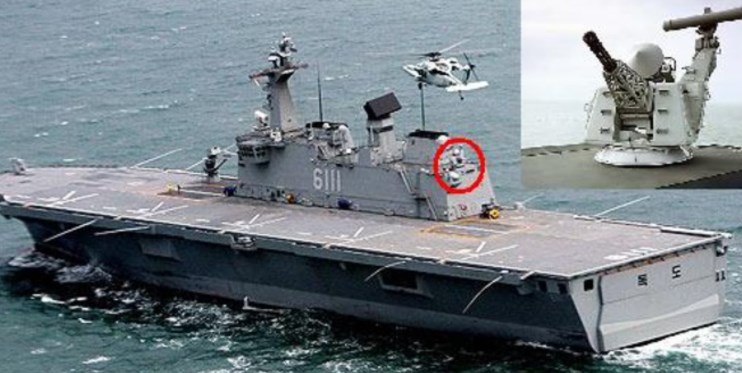
It is questionable whether the South Korean Navy’s assault landing ship Dokdo is really the kind of ship South Korea needs.
Since South Korea shares a border with North Korea, its land forces are sufficient, and only China and North Korea can defend the seas, a missile frigate would be a suitable deployment for the country’s power and military balance.
South Korea, which has a rivalry with Japan, deployed its own Aegis when Japan acquired its own.
Also, when Japan planned to deploy F-35B fighter jets, South Korea immediately launched its own deployment plan.
Recently, South Korea has been trying to build a large warship to compete with the Maritime Self-Defense Force’s Izumo, but I think this equipment is unnecessary for South Korea since they are not a maritime nation surrounded by the sea all around like Japan.
I think the assault ship Dokdo is just another piece of equipment to compete with Japan.
Dokdo is the Korean word for Takeshima, a territory unique to Japan.
It raises the question as to whether Korea really an ally army of Japan when they are putting that kind of name on their landing ships.
Amazonのオーディオブック12万タイトルの本を好きなだけお楽しみいただけます。・本の1冊分の月額で聴き放題
・料金をメリットが上回る
・いつでも読書できる
・読書量が格段に増え、積読が解消される
・長時間の読書も目が疲れない
・聴くたびに学びを感じる
